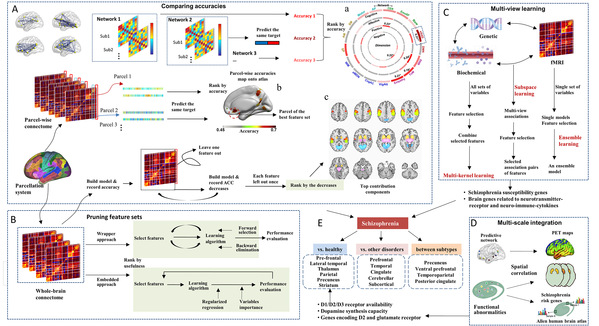How machine learning helps to understand the neurobiological and nosological bases of mental illness?
Much attention has been drawn to the use of classification models for clinical diagnoses since machine learning was introduced to psychiatric research, but there are still practical challenges. Meanwhile, the trend of using machine learning to identify the neurobiological features and to provide the new insights for the nosology of mental disorders has emerged.
The research team led by Assist. Prof. CHEN Ji at the Zhejiang University Department of Psychology and Behavioral Sciences summarized several new directions based on prior psychiatric machine learning studies and highlighted the essential role of machine learning in providing neurobiological and nosological insights into mental disorders. Their findings were published as a review article in the journal Biological Psychiatry.
By reviewing the latest trends in the field of machine learning for mental disorders, CHEN Ji et al. presented their views: 1) The classification accuracy rate of machine learning models can be used as a dependent variable to identify the biological features intimately linked to the pathophysiological processes of mental disorders; 2) The accuracy rate of classification models can be used to explore the taxonomic relationship among mental disorders in DSM; and 3) Semi-supervised and unsupervised machine learning can be used to analyze the dimensional (within diagnosis) and often overlapping (across diagnoses) symptomatology of psychiatric illness.

To address these methodological perspectives and application strategies, the researchers proposed common pitfalls associated with input data or analytic procedures at the technical level, focusing on the theme of “garbage-in & garbage-out”.
This study provides a new perspective for screening biomarkers of mental disorders and for resolving diagnostic heterogeneity and co-morbidity issues in psychiatric research. Moreover, it highlights the necessity of addressing potential problems and pitfalls in data acquisition, model construction and result elaboration before using machine learning to identify reliable biomarkers and explore new taxonomies for mental disorders.